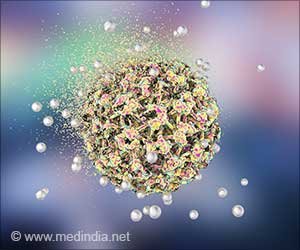DNA Repair Pathway Linked to Breast, Ovarian, and Prostate Cancers

Out of all DNA repair pathways, TMEJ has been the most elusive. Richard Wood, PhD, a distinguished professor at University of Texas MD Anderson Cancer Center played a key role in the first characterization of polymerase theta in 2003.
Over the next 15 years, multiple labs, including the Wood, Ramsden, and Gupta labs (also at Lineberger Comprehensive Cancer Center), were able to link polymerase theta to DNA repair (TMEJ) and cancer. Sylvie Doubli, PhD, an alumnus of UNC-Chapel Hill and professor of microbiology and molecular genetics at the University of Vermont, then solved the first structure of polymerase theta.
Advertisement
Together, and with other scientists from Penn State and New York University, these researchers were dedicated to understanding precisely what steps are involved in TMEJ, and which of those steps polymerase theta does and does not perform.
With the help of these collaborators, Stroik was able to use a wide variety of cutting-edge experimental approaches to fill in the gaps in our understanding of the TMEJ pathway. Critically, she discovered that another polymerase, called polymerase delta, uses a buddy system with polymerase theta to assist it in this repair pathway.
Stroik’s research showed that polymerase theta is good at some things, but not others.
“It makes a lot of errors and it’s not capable of creating large swaths of DNA at once,” said Stroik. “What was so beautiful and kind of elegant about the whole discovery is that there are two different enzymes alternating between pathway steps and helping each other out.”
When a double stranded break occurs, both strands of DNA are cut at the same spot, much like scissors severing a braid of hair. Polymerase theta acts quickly, grabbing the two single strands of DNA, matching up the closest base pairs to the break, and holding them together.
However, this often leaves some residual flaps of single stranded DNA at the ends. Polymerase delta jumps in to cut the extraneous flaps, giving polymerase theta enough room to start synthesizing new DNA to fill in gaps in the DNA strands. Finally, polymerase delta jumps in one last time to help polymerase theta complete synthesis.
Since many cancers make use of the TMEJ pathway to keep tumors alive, many researchers have investigated creating drugs that can interfere with the pathway, essentially preventing cancer from repairing itself, leading to its eventual demise.
“Anytime you find new pieces of the pathway, you can ‘drug’ it,” said Ramsden.
Stroik and Ramsden’s new research will contribute to ongoing basic studies in polymerases theta and delta, while also aiding new cancer drugs called polymerase theta inhibitors, which are currently in clinical trials.
Reference :
- Stepwise requirements for polymerases δ and θ in theta-mediated end joining – (https://www.nature.com/articles/s41586-023-06729-7)
Source: Newswise
Source link
#DNA #Repair #Pathway #Linked #Breast #Ovarian #Prostate #Cancers



